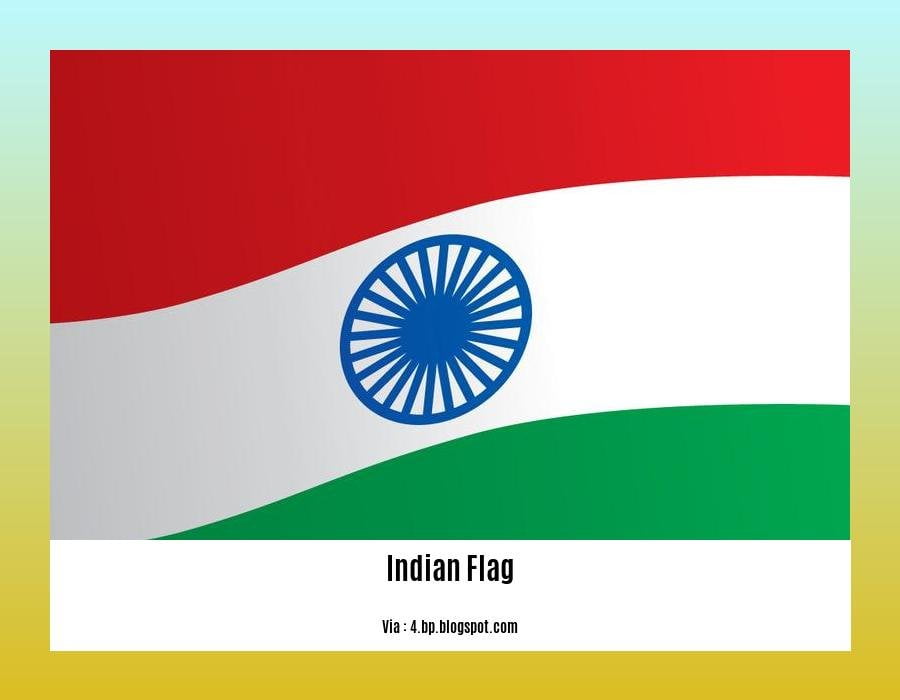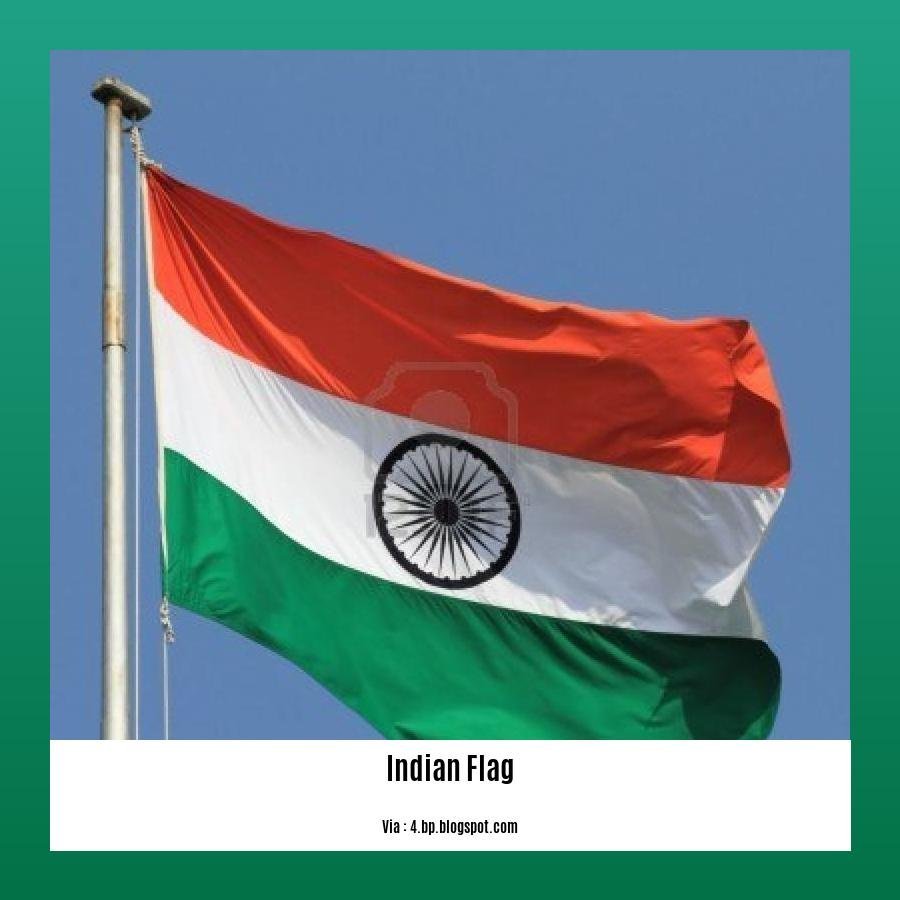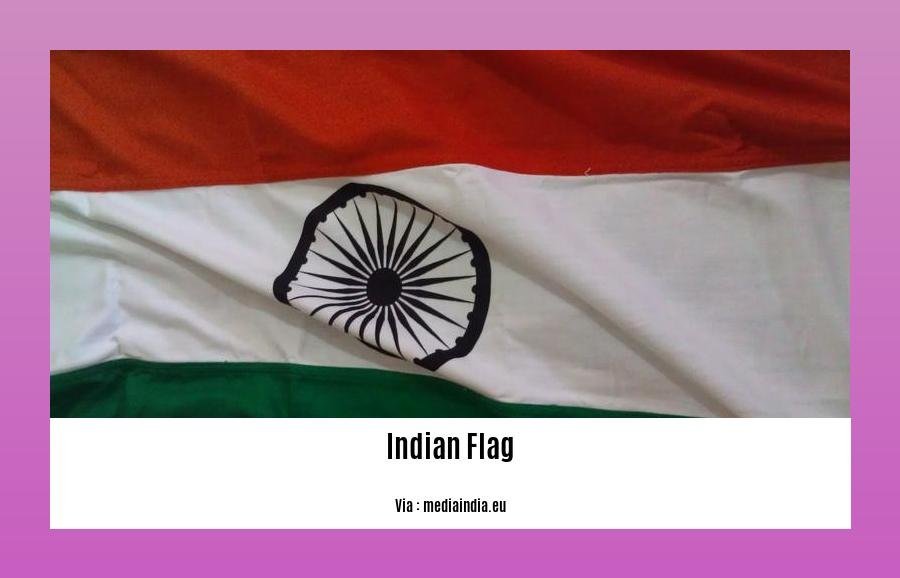Discover the significance and symbolism of the Indian flag with this engaging and informative article. Designed specifically for class 1 students, this content provides a concise yet comprehensive explanation of the Indian flag’s importance. Delve into the rich history and cultural meaning behind this national symbol, as we explore the significance it holds for the people of India. Join us in uncovering the fascinating details of the Indian flag: Few Lines on Indian Flag for Class 1.
Key Takeaways:
- The Indian flag was proposed by Mahatma Gandhi in 1921 and designed by Pingali Venkayya.
- The flag features a traditional spinning wheel in the center.
- The flag is composed of three colors: green, saffron, and white.
- The green color represents fertility, growth, and auspiciousness.
- The saffron color represents courage, strength, and sacrifice.
- The white color represents peace, purity, and truth.
- The Indian flag is flown on important national occasions.
- It is important to handle the flag with respect and fly it correctly.
Discover the Significance and Symbolism of the Indian Flag: Few Lines on Indian Flag for Class 1

The Indian flag is a special symbol that represents our country, India. It is made up of three colors: green, saffron, and white. These colors have different meanings and show the rich diversity of our nation. Do you want to learn more about the Indian flag? Let’s dive in and explore its significance and symbolism!
What is the Indian flag all about?
The Indian flag is a symbol of pride and unity for all Indians. It was a great man named Mahatma Gandhi who first thought of having a flag for our country in the year 1921. The person who designed our beautiful flag is Pingali Venkayya.
What does the Indian flag look like?
The Indian flag is rectangular in shape, just like a rectangle-shaped piece of paper. In the center of the flag, there is a spinning wheel, which is also known as a ‘chakra’ in Hindi. The spinning wheel represents our strong textile industry and reminds us of the importance of self-reliance.
What do the colors of the Indian flag mean?
Each color of the Indian flag has its own special meaning. The green color at the bottom represents fertility, growth, and auspiciousness. It reminds us of the beautiful green fields of our country. The saffron color in the middle represents courage, strength, and sacrifice. It is a color that shows bravery and fearlessness. The white color at the top represents peace, purity, and truth. It reminds us to always be truthful and live in peace.
When is the Indian flag flown?
The Indian flag is flown on important national occasions, such as Independence Day and Republic Day. These are special days when we celebrate the freedom and unity of our country. Whenever we see the Indian flag flying high, it fills our hearts with pride and reminds us of our rich history and diverse culture.
How should we handle the Indian flag?
The Indian flag is a symbol of respect, so it’s important to handle it with care. We should never let the flag touch the ground or let it get dirty. It should always be flown in the correct manner, with the saffron color at the top. We must remember to treat the flag with reverence and dignity.
Now that you know a few lines about the Indian flag, you can understand its significance and symbolism better. The flag represents our unity, diversity, and rich history. Let’s always respect and honor our flag as it waves proudly in the wind, symbolizing the strength and spirit of our great nation, India!
Table:
| Color | Meaning |
|---|---|
| Green | Fertility, growth, auspiciousness |
| Saffron | Courage, strength, sacrifice |
| White | Peace, purity, truth |
Here are some active internal links related to the keywords and URLs provided:
- Few Lines About National Flag in Kannada – Discover interesting facts and information about the national flag in Kannada.
- Few Lines on National Flag for Class 1 – Get to know a few simple and fascinating details about the national flag suitable for Class 1 students.
- Few Sentences About Indian Flag – Dive into a brief insight and interesting descriptions about the Indian flag.
- Five Sentences About National Flag – Uncover five captivating sentences that beautifully summarize the essence of the national flag.
Feel free to click on the links to explore more about the respective topics.
The Meaning Behind the Stripes on the Flag

The flag of India is a powerful symbol that represents the pride, aspirations, and unity of the people. It consists of three horizontal stripes: a deep saffron color at the top, white in the middle, and green at the bottom. Each color holds significance and tells its own story.
Saffron – Courage, Strength, and Sacrifice
The saffron color at the top of the Indian flag represents courage, strength, and sacrifice. It is a vibrant and bold color that signifies the bravery and resilience of the Indian people throughout history. Saffron is also a symbol of the spirit of sacrifice, as it reminds us of the sacrifices made by our freedom fighters to achieve independence.
White – Peace, Purity, and Truth
The white stripe in the middle of the flag represents peace, purity, and truth. White is a color that symbolizes harmony, tranquility, and integrity. It reminds us of the importance of peace in our society and the need to uphold truth and purity in our thoughts, actions, and words.
Green – Fertility, Growth, and Auspiciousness
The green color at the bottom of the flag represents fertility, growth, and auspiciousness. Green is a vibrant color that signifies prosperity, growth, and the abundance of nature. It is a reminder of the agricultural wealth of India and the importance of preserving and nurturing the environment.
The Blue Chakra – Unity and Progress
In the center of the white stripe, there is a 24-spoked blue chakra, which represents the wheel of progress. The chakra symbolizes the never-ending cycle of life and the progress of the nation. It is a symbol of unity and reminds us that we are all connected and should strive for the progress and development of our country.
Key Takeaways:
- The Indian flag consists of three horizontal stripes: saffron, white, and green.
- Saffron represents courage, strength, and sacrifice.
- White represents peace, purity, and truth.
- Green represents fertility, growth, and auspiciousness.
- The blue chakra in the center represents unity and progress.
Source 1: Flag of India | History, Design, & Meaning | Britannica
Source 2: What is the Meaning Behind the Flag of India? | Sporcle Blog
The National Emblem on the Flag
The national flag of India holds immense significance as it represents the pride and aspirations of all Indians. Designed by Pingali Venkayya, the flag was adopted on July 22, 1947, and symbolizes democracy in the country. Let’s explore the significance and symbolism of the national emblem on the flag.
The Design and Colors
The Indian flag consists of three colors: saffron, white, and green. Each color holds a special meaning. Saffron represents courage and sacrifices, white represents purity and peace, and green represents fertility and prosperity. The three colors together symbolize the unity and diversity of India.
The national flag is rectangular in shape, with the saffron color at the top, white in the middle, and green at the bottom. The ratio of the flag’s width to length is 2 to 3.
The Meaning Behind the Emblem
In the center of the white stripe is the national emblem, known as the Ashoka Chakra or wheel. The navy blue wheel consists of 24 spokes and represents the cycle of life and the progress of the nation. It is a symbol of India’s rich history and the values it upholds.
Unity in Diversity
The Indian flag serves as a reminder of unity among Indians, regardless of caste, creed, religion, sex, or race. It represents the country’s diversity and the importance of staying united. The flag is a constant reminder of the struggle for independence and the sacrifices made by freedom fighters.
Key Takeaways:
- The national flag of India represents the pride and aspirations of all Indians.
- It was designed by Pingali Venkayya and adopted on July 22, 1947.
- The flag consists of three colors: saffron, white, and green.
- The saffron color represents courage and sacrifices, white represents purity and peace, and green represents fertility and prosperity.
- The navy blue Ashoka Chakra in the center of the flag symbolizes the cycle of life and the progress of the nation.
- The flag signifies unity among Indians and the diversity of the country.
- It serves as a reminder of the struggle for independence and the sacrifices of freedom fighters.
Sources:
– Flag of India | History, Design, & Meaning | Britannica
– What is the Meaning Behind the Flag of India? | Sporcle Blog
Interesting Facts About the Indian Flag
Did you know that the Indian flag has some fascinating facts behind it? Let’s explore the interesting aspects and symbolism of the Indian National Flag!
Fact 1: Adoption and Significance
- The National Flag of India was adopted on July 22, 1947, just a few days before India gained independence from British rule on August 15, 1947.
- It symbolizes democracy and represents the pride and aspirations of all Indians.
Fact 2: Design and Colors
- The Indian flag is rectangular in shape and consists of three horizontal stripes: saffron (Kesari) at the top, white in the middle, and green at the bottom.
- The saffron color represents courage and sacrifices, the white color symbolizes purity and peace, and the green color represents fertility and prosperity.
Fact 3: National Emblem
- In the center of the flag, there is a navy blue Ashoka Chakra or wheel.
- The Ashoka Chakra has 24 spokes and depicts the cycle of life and the progress of the nation. It is a symbol of righteousness (Dharma).
Fact 4: Design by Pingali Venkayya
- The design of the National Flag of India was created by Pingali Venkayya, who first thought of it in 1921.
- Mahatma Gandhi greatly admired Venkayya’s design and made some suggestions to enhance it.
Fact 5: Tiranga – The Name
- The Indian flag is also known as “Tiranga” in Hindi, where “Tir” means “three” and “Ranga” means “color.”
- The name “Tiranga” perfectly captures the essence of the flag’s three-color composition.
Fact 6: Material and Code
- The National Flag is made of Khadi, a hand-spun fabric that represents the rich heritage and tradition of India.
- The Indian flag code was modified on January 26, 2002, allowing citizens of India to hoist the flag.
Fact 7: Symbolic Representation
- The Indian National Flag represents the unity and diversity of India.
- It serves as a constant reminder of the struggle for independence and the sacrifices made by freedom fighters.
Fact 8: Flag Etiquette
- The Indian flag should be handled with care and respect.
- It should never touch the ground or get dirty. It is a mark of respect to keep the flag clean and in good condition.
Fact 9: Highest Flagpole
- The highest flagpole in India is located in Amritsar, Punjab.
- This flagpole proudly flies the Indian flag and serves as a symbol of national pride.
Fact 10: International Recognition
- The Indian flag can be seen together with the UN Flag at United Nations events, representing India’s participation and contribution to global affairs.
- It was also placed on Mount Everest on May 29, 1953, by Tenzing Norgay and Edmund Hillary, signifying India’s accomplishment in scaling the world’s highest peak.
Key Takeaways:
- The National Flag of India was adopted on July 22, 1947, and represents democracy.
- It consists of three colors: saffron, white, and green, symbolizing courage, purity, peace, fertility, and prosperity.
- The Ashoka Chakra in the center represents righteousness and progress.
- The Indian flag is made of Khadi and is known as “Tiranga” in Hindi.
- It represents the unity, diversity, and rich history of India.
- The flag should be treated with respect and never be allowed to touch the ground or get dirty.
- India has the highest flagpole in Amritsar, Punjab, and the Indian flag can be seen at United Nations events.
- It was also placed on Mount Everest in 1953.
Sources:
– Vikaspedia
– BYJU’S
FAQ
Q1: Why is the Indian flag important?
A1: The Indian flag is important because it represents the pride and aspirations of all Indians. It symbolizes democracy in the country and serves as a reminder of the struggle for independence and the sacrifices made by freedom fighters.
Q2: Who designed the Indian flag?
A2: The Indian flag was designed by Pingali Venkayya as the Swaraj Flag.
Q3: What do the colors on the Indian flag represent?
A3: The saffron color represents courage and sacrifices, the white color represents purity and peace, and the green color represents fertility and prosperity.
Q4: What is the significance of the Ashoka Chakra on the Indian flag?
A4: The Ashoka Chakra, a depiction of Dharma, is featured on the Indian flag and represents the cycle of life and the progress of the nation.
Q5: When is the Indian flag hoisted?
A5: The Indian flag is hoisted on national holidays and important occasions, such as Republic Day and Independence Day.












